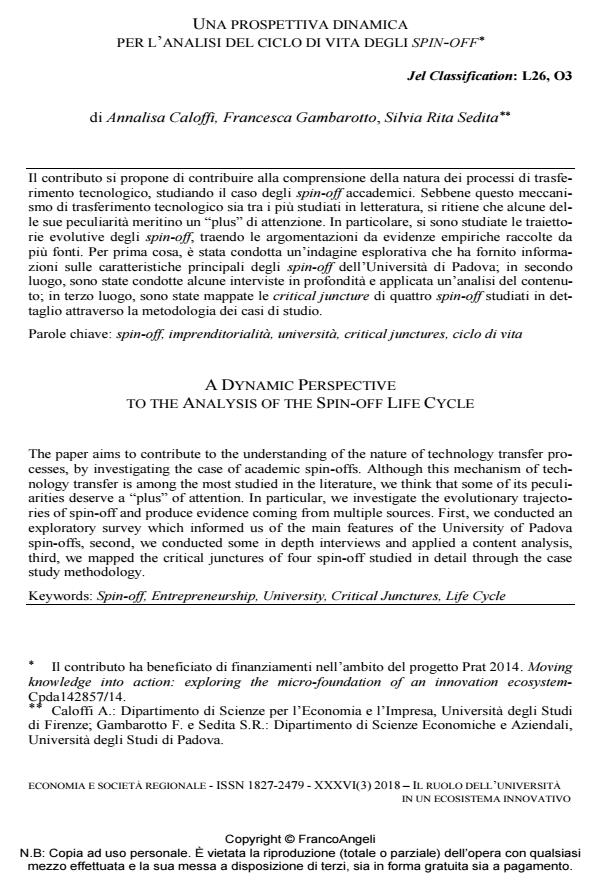A dynamic perspective to the analysis of the spin-off life cycle
Journal title ECONOMIA E SOCIETÀ REGIONALE
Author/s Annalisa Caloffi, Francesca Gambarotto, Silvia Rita Sedita
Publishing Year 2018 Issue 2018/3
Language Italian Pages 9 P. 86-94 File size 223 KB
DOI 10.3280/ES2018-003008
DOI is like a bar code for intellectual property: to have more infomation
click here
Below, you can see the article first page
If you want to buy this article in PDF format, you can do it, following the instructions to buy download credits

FrancoAngeli is member of Publishers International Linking Association, Inc (PILA), a not-for-profit association which run the CrossRef service enabling links to and from online scholarly content.
The paper aims to contribute to the understanding of the nature of technology transfer processes, by investigating the case of academic spin-offs. Although this mechanism of technology transfer is among the most studied in the literature, we think that some of its peculiarities deserve a "plus" of attention. In particular, we investigate the evolutionary trajectories of spin-off and produce evidence coming from multiple sources. First, we conducted an exploratory survey which informed us of the main features of the University of Padova spin-offs, second, we conducted some in depth interviews and applied a content analysis, third, we mapped the critical junctures of four spin-off studied in detail through the case study methodology.
Keywords: Spin-off, Entrepreneurship, University, Critical Junctures, Life Cycle
Jel codes: L26, O3
Annalisa Caloffi, Francesca Gambarotto, Silvia Rita Sedita, Una prospettiva dinamica per l’analisi del ciclo di vita degli spin-off in "ECONOMIA E SOCIETÀ REGIONALE " 3/2018, pp 86-94, DOI: 10.3280/ES2018-003008